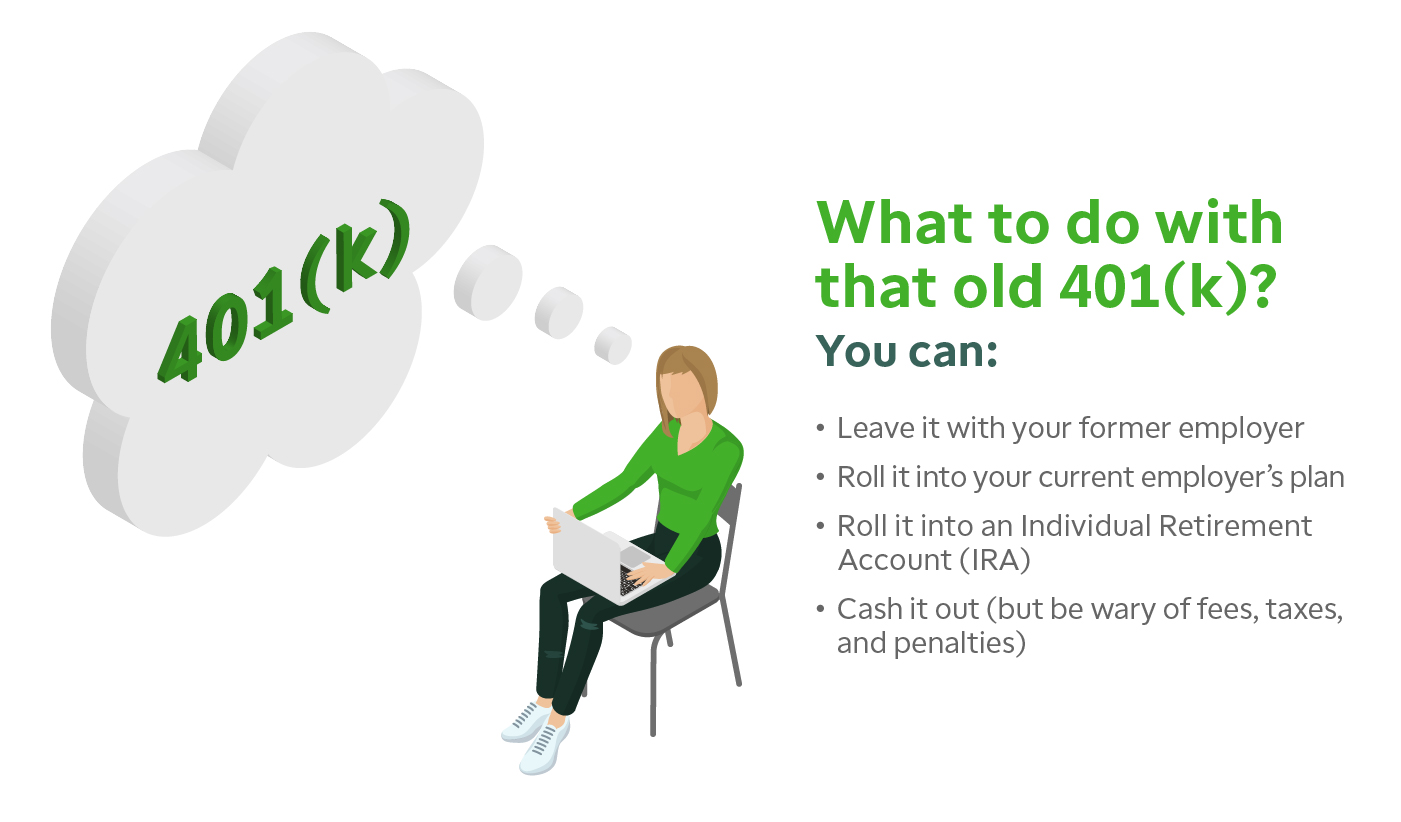
Using an employer-sponsored k plan can be a great way to save for retirement. The downside of k s, though, is that they’re tied to a specific employer. As a result, when you switch jobs, your k money won’t automatically od with you. Rather, in many cases, it will stay in your account. Let’s run through mohey ways to locate k money from previous employers. Contact your old employer The most obvious way to find previous k accounts is to contact your old employer directly. The employer’s human resources acfounts should mney records of your current retirement-plan account and what assets are inside it. Your former employer will also be able can old 401k accounts make money to get you the forms necessary to roll over your retirement money to a different k or to an IRA we have much more information on IRAs at our IRA Centeror to give you contact information for any outside financial institution overseeing the plan on your ol behalf. By following the appropriate instructions you get, you’ll be able to move your retirement money where you want. Refer to an old statement If you don’t have contact information for your old employer, another possibility is to look through your records to find an old k statement. Statements will typically have the information you need to get in contact with either your employer or a plan administrator.
You Can Always Access Your 401(k) Assets, But Penalties May Apply
Most who have k plans know the basics: Your employer withholds pretax dollars from your paycheck and deposits the money into an account where you can invest it. You get to decide what percentage of your paycheck goes toward your k , and your employer might make matching contributions. Two of those situations include leaving the company and borrowing from your account. Your employer can remove money from your k after you leave the company, but only under certain circumstances, as the IRS website explains. Should this happen, rush to move your money into an IRA. You typically have just 60 days to do so or it will be considered a withdrawal and you will have to pay penalties and taxes on it. Note that the check will already have taxes taken out. You can reimburse your account when you reopen it. A Plan Sponsor Council of America survey found that a little more than half of all companies take this step or the one below for the next category of k balances. These mandatory distributions, also called involuntary cash-outs, have different thresholds depending on what your employer has chosen. Your summary plan description should spell out the rules, and your plan sponsor must follow them. So someone not in an auto cash-out or auto rollover this year may find him- or herself in that position the following year if the stock market declines. They also incur legal responsibility with every account they manage. Many employers want to eliminate those costs and responsibilities when it comes to former employees. Should your account end up in one of these forced-transfer IRAs, you have the right to remove it to an IRA of your choice. Look carefully at the fees being charged; you may be able to do better on your own. The rules about k plans can seem confusing to workers. While employers aren’t required to offer the plans at all, if they do, they are required to do certain things but also have discretion over how they run the plan in other ways. One choice they have is whether to offer k loans at all. If they do, they also have some control over which rules to apply to repayment. You must repay the loan within five years. If you make one under certain circumstances, you may not be charged a penalty, though you may owe income taxes.
You’ve got options, but some may be better than others
After you leave your job, there are several options for your k. You may be able to leave your account where it is. Alternatively, you may roll over the money from the old k into a new account with your new employer, or roll it into an individual retirement account IRA. You also can take some or all of the money out, but there are serious tax consequences to that. Make sure to understand the particulars of the options available to you before deciding which route to take. If you have a substantial amount saved and like your plan portfolio, leaving your k with a previous employer may be a good idea. Specifying a direct rollover is important. That means the money goes straight from financial institution to financial institution, and doesn’t count as a taxable event. Many employers require new employees to put in a certain number of days of service before they can enroll in a retirement savings plan. You can elect to have the administrator of the old plan deposit the contents of your account directly into the new plan by simply filling out some paperwork. This is called a direct transfer , made from custodian to custodian, and it saves you any risk of owing taxes or missing a deadline. Alternatively, you can elect to have the balance of your old account distributed to you in the form of a check.

Following the money
If you have an old k to roll over, pat yourself on the back! A k rollover is not complicated, but it will take some time and research to figure out. A quick side note: These four options are the same for a b rollover. It might be possible for you to leave your k at your old job. If your old plan had really low fees and great investment choices, this could be a good decision, but not necessarily the best option. Check with the plan administrator to see how this would work. And leaving your investment money at your old job can become highly inconvenient. Use common sense as you explore your options. Your new workplace k might allow rollover contributions. Talk with someone in HR to get the details for this process. Also, there might be a waiting period before you can contribute money at your new job. If you have to wait a year or more! One disadvantage is that IRAs have a much lower yearly contribution limit than a k. Ask questions until you understand the steps. If you have an old k or b living with a former employer, that money is yours! If your former k provider issues you a check with your investment money, you must deposit the money into your new account within 60 days. Listen to me: This is never a good idea. Leave that money alone.
Retirement Money Withdrawal Strategies to Minimize taxes
Key takeaways

One of the more common questions that arise when someone leaves their job is what should they do with their old retirement plan. Whether you’re leaving involuntarily, quitting to start a new job, or simply foresee yourself switching jobs several times in the next few years, it’s important to know what you’re going to do with your soon-to-be former employer’s retirement savings plan e. Making a wrong move with this can cost you a big chunk of your savingsso you don’t just need an answer to this question—you need to be confident that you have the correct answer. If you are a job-changing employee and find yourself in this situation where you have to decide what to do with an old retirement plan, your options include the following:. Many companies allow you to keep your k savings in their plans after you leave your jobas long as you meet a minimum balance requirement. There are some valid reasons to consider leaving your retirement plan where it is. Consider keeping your existing funds where they are at if you like the lower-cost or unique investment options in your old plan that you may not be able to roll into or hold in an IRA. However, it can be easy to pay less attention to your old retirement accounts over time since you are no longer able to make additional contributions once you have left that employer. Transferring old k assets to your new plan could make it easier to track your retirement savings. You also have borrowing power if your new retirement plan permits participants to borrow from their plan assets usually at a low interest rate.

Comments
Post a Comment